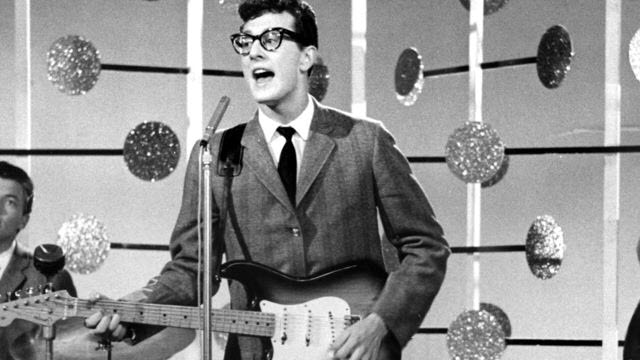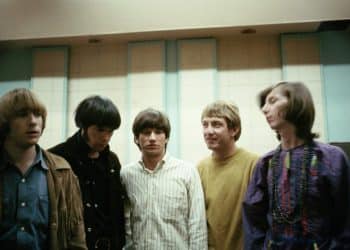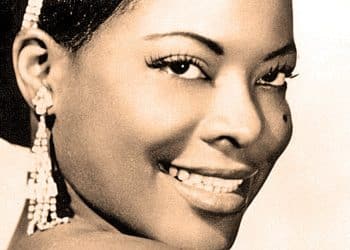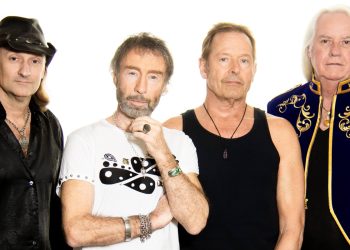Buddy Holly, the bespectacled trailblazer of rock ‘n’ roll, was a musical genius who left an indelible mark on the world in his tragically short career. With his signature hiccuped vocals, infectious melodies, and pioneering spirit, Buddy Holly’s songs continue to resonate with fans across generations. Despite his untimely passing at the age of 22, Holly’s influence on music is eternal, inspiring everyone from The Beatles to Bob Dylan.
In this article, we celebrate the top 10 most popular Buddy Holly songs of all time—timeless tracks that encapsulate his brilliance and innovation. From upbeat rockabilly anthems to heartfelt ballads, Holly’s music captures the spirit of youthful rebellion, romance, and the joy of life itself. Whether you’re a devoted fan or a newcomer eager to explore his legacy, this list will take you on a journey through the golden era of rock ‘n’ roll.
From the toe-tapping rhythms of “Peggy Sue” to the tender yearning of “Everyday,” these songs are more than just hits—they’re cultural milestones. So, crank up the volume, put on your dancing shoes, and get ready to relive the magic of Buddy Holly’s most iconic tunes that still shine like a bright star in the rock ‘n’ roll galaxy!
1. That’ll Be the Day (1957)
“That’ll Be the Day” is one of the defining songs of early rock and roll, released in 1957 and catapulting Buddy Holly and The Crickets to stardom. The song’s title was inspired by a phrase frequently used by John Wayne in the 1956 film The Searchers, and its rebellious undertones resonated with young audiences at the time. Holly’s distinctive vocal delivery, coupled with an upbeat, infectious rhythm, made the track an instant classic.
Musically, “That’ll Be the Day” blends elements of country, rockabilly, and rhythm and blues, creating a sound that was fresh and exciting. The steady, rolling beat, twangy guitar licks, and Holly’s signature hiccupping vocal style gave it a unique edge in the evolving rock and roll scene. The lyrics express confidence and defiance, as the narrator dismisses the idea that he’ll ever be heartbroken, adding to the song’s bold attitude.
This track became a massive hit, reaching No. 1 on the Billboard Hot 100 and solidifying Buddy Holly’s status as a trailblazer. Over the years, it has been covered by numerous artists, including The Beatles and Linda Ronstadt, proving its enduring influence. “That’ll Be the Day” remains an essential piece of rock history, capturing the spirit of a generation eager to embrace change and youthful independence.
2. Peggy Sue (1957)
“Peggy Sue,” released in 1957, is one of Buddy Holly’s most beloved and instantly recognizable songs. What sets this track apart is its hypnotic drumbeat, which was originally a steady roll but later changed to a dynamic, pulsating rhythm that adds to its hypnotic effect. Combined with Holly’s signature hiccup-like vocal delivery, the song has a mesmerizing quality that draws listeners in.
The track was initially titled “Cindy Lou” after Holly’s niece, but it was changed to “Peggy Sue” at the request of drummer Jerry Allison, who was dating a girl by that name at the time. This personal touch adds an element of charm to the song, making it feel even more authentic and heartfelt. Holly’s guitar work is crisp and precise, complementing the song’s simple yet effective lyrics about admiration and devotion.
“Peggy Sue” became a huge success, reaching No. 3 on the Billboard charts and cementing Holly’s reputation as a master of melody. The song has stood the test of time, inspiring countless musicians and appearing in films, commercials, and pop culture references. It remains a shining example of Buddy Holly’s ability to turn a simple love song into a rock and roll masterpiece.
3. Everyday (1957)
“Everyday” is one of Buddy Holly’s most tender and uplifting songs, released in 1957 as the B-side to “Peggy Sue.” Unlike some of his more high-energy rock tracks, this song takes a softer, more delicate approach, showcasing Holly’s ability to craft deeply emotional and relatable music.
The song features a simple yet captivating arrangement, with a percussive rhythm created by producer Norman Petty tapping on his wife’s knee to create a heartbeat-like pulse. The celesta, a rare keyboard instrument, adds a dreamy, bell-like quality that perfectly complements Holly’s soothing vocals. The result is a warm, nostalgic sound that feels timeless.
Lyrically, “Everyday” captures the excitement and optimism of young love, with lines that express hope and the anticipation of something wonderful. Its message is universal, which is why it continues to resonate with listeners of all generations. The song has been featured in numerous movies, most notably in Stand by Me (1986), further solidifying its place as a classic.
Despite its gentle tone, “Everyday” carries an undeniable energy, proving that rock and roll isn’t always about electric guitars and pounding drums. It’s a beautifully simple yet profound song that continues to bring joy to those who hear it.
4. Oh Boy! (1957)
Released in 1957, “Oh Boy!” is one of Buddy Holly’s most exuberant and high-energy songs, showcasing his signature blend of rockabilly and early rock and roll. From the opening guitar strums to the enthusiastic backing vocals, the song radiates excitement and joy. Written by Sonny West, Bill Tilghman, and Norman Petty, the song was originally recorded by West before Holly and The Crickets made it their own, turning it into a rock and roll anthem.
Musically, “Oh Boy!” is a perfect example of the upbeat, danceable style that made Holly a legend. The track features driving percussion, bright guitar riffs, and Holly’s unmistakable vocal style, which captures the sheer thrill of being in love. The lyrics are straightforward yet effective, expressing an uncontainable enthusiasm for romance: “All of my love, all of my kissin’, you don’t know what you’ve been a-missin’.”
The song was a commercial success, reaching No. 10 on the Billboard Hot 100 and becoming one of Holly’s most enduring hits. Its infectious energy has led to numerous covers by artists like The Stray Cats and Bruce Springsteen, proving that “Oh Boy!” remains a celebration of youthful love and the excitement of rock and roll.
5. Not Fade Away (1957)
“Not Fade Away” is a revolutionary track in Buddy Holly’s discography, released in 1957 as the B-side to “Oh Boy!” Despite being a secondary release, it became one of Holly’s most influential songs, especially because of its pioneering use of the Bo Diddley beat—a syncopated rhythm that would later be a staple in rock music.
From the moment the song begins, its pounding beat and infectious handclaps create an irresistible groove. Holly’s rhythmic strumming and confident vocal delivery add to the song’s raw energy, while the lyrics express a determined, unwavering love: “I’m gonna tell you how it’s gonna be, you’re gonna give your love to me.” This straightforward but passionate message, combined with the song’s hypnotic beat, gives “Not Fade Away” an enduring appeal.
Though Holly’s version was a moderate success, it later gained legendary status when The Rolling Stones covered it in 1964, turning it into a major hit. The song’s influence can be heard across generations of rock musicians, proving Holly’s innovation in blending rhythm and blues with rock and roll. “Not Fade Away” remains a cornerstone of early rock, capturing the excitement and rebellion that defined the era.
6. Rave On (1958)
“Rave On,” released in 1958, is a high-energy rock and roll track that embodies the sheer joy and excitement of Buddy Holly’s music. Originally written by Sonny West, Bill Tilghman, and Norman Petty, the song was first recorded by West, but it was Holly’s version that turned it into a classic.
From the moment the song starts, it bursts with an electrifying energy. The driving beat, quick-paced lyrics, and Holly’s enthusiastic vocal delivery make it an instant dance-floor favorite. The song’s lyrics express an uncontainable enthusiasm for love, perfectly matching its fast-paced, almost breathless rhythm. The phrase “Rave On” itself became a slang term for celebrating and enjoying life, making the song an anthem for rock and roll’s youthful spirit.
“Rave On” was a commercial success, reaching the Top 40 charts and further solidifying Holly’s reputation as one of rock’s most innovative artists. Over the years, it has been covered by artists like John Mellencamp and M. Ward, keeping its legacy alive. The song remains a favorite in Holly’s catalog, encapsulating the electrifying, rebellious energy that made early rock and roll so thrilling.
7. It’s So Easy (1958)
“It’s So Easy” is a deceptively simple yet irresistibly catchy rock song, released by Buddy Holly in 1958. The track is a masterclass in Holly’s ability to craft melodies that stick with listeners, using minimal instrumentation to create a lively and engaging sound.
The song’s bouncy rhythm and playful lyrics convey the carefree feeling of falling in love: “It’s so easy to fall in love.” Holly’s vocal delivery is lighthearted and effortless, adding to the song’s charm. The track features a smooth yet energetic arrangement, with crisp guitar work and steady percussion driving the song forward. Though it didn’t initially chart as highly as some of Holly’s other hits, it later gained widespread recognition when Linda Ronstadt covered it in 1977, turning it into a major success.
Despite its initial commercial reception, “It’s So Easy” has endured as a beloved rock classic. Its timeless appeal lies in its joyful simplicity and Holly’s unmistakable vocal style, making it a standout track that continues to bring smiles to listeners across generations.
8. Maybe Baby (1957)
“Maybe Baby,” released in 1957, is a beautifully crafted rock and roll song that perfectly balances heartbreak and hopefulness. Co-written by Buddy Holly and Norman Petty, the track showcases Holly’s signature vocal phrasing and his ability to blend emotional depth with an upbeat, catchy melody.
The song’s opening guitar riff is instantly recognizable, setting the stage for Holly’s smooth and heartfelt vocals. The lyrics express uncertainty in love, with the narrator wondering if his affections will ever be returned: “Maybe baby, you’ll love me someday.” While the words hint at longing, the melody remains bright and optimistic, capturing the complexity of youthful romance.
“Maybe Baby” became one of Holly’s most enduring hits, proving that rock and roll could convey both vulnerability and confidence. The song has since been covered by numerous artists and featured in films, further solidifying its place in rock history. With its relatable lyrics and memorable tune, “Maybe Baby” remains a testament to Buddy Holly’s songwriting genius.
9. True Love Ways (1958)
“True Love Ways” is one of Buddy Holly’s most tender and heartfelt songs, showcasing a completely different side of the rock and roll pioneer. Released posthumously in 1960 but recorded in 1958, the song stands apart from Holly’s energetic rock hits with its lush orchestration and deeply emotional delivery. Written for his wife, María Elena, the song was meant to express Holly’s devotion and commitment, making it one of the most personal compositions of his career.
Unlike many of his earlier rock and roll tracks, “True Love Ways” is a romantic ballad featuring a sweeping string arrangement that enhances its sentimental mood. Holly’s vocal performance is gentle and sincere, conveying the depth of his love with lines like, “Just you and I, forever and a day.” The melody is beautifully structured, allowing Holly’s voice to shine with a warmth and intimacy rarely heard in his more upbeat songs.
Though it was released after Holly’s tragic passing in 1959, “True Love Ways” quickly became a beloved classic, especially at weddings and romantic occasions. The song has been covered by numerous artists, including Peter and Gordon, and remains one of Holly’s most moving and enduring pieces, proving that his musical genius extended far beyond rock and roll.
10. Heartbeat (1958)
https://www.youtube.com/watch?v=XJhjRPC0LVk&pp=ygUQSGVhcnRiZWF0ICgxOTU4KQ%3D%3D
“Heartbeat,” released in 1958, is a charming and infectious rock and roll track that perfectly captures the excitement and innocence of young love. As one of the last songs Buddy Holly recorded before his untimely passing, it remains a joyful and upbeat piece that highlights his knack for creating simple yet memorable melodies.
From the opening guitar licks to the steady, pulsing beat that mirrors the song’s title, “Heartbeat” immediately draws listeners in. Holly’s signature vocal delivery, filled with playful inflections, adds a sense of fun and sincerity to the lyrics: “Heartbeat, why do you miss when my baby kisses me?” The song’s lighthearted nature makes it an easy favorite, perfectly reflecting the carefree spirit of early rock and roll.
Though “Heartbeat” wasn’t one of Holly’s biggest hits upon release, it gained new life in the decades that followed. It became widely recognized when it was covered by The England Sisters in the 1960s and later became the theme song for a British television series of the same name. Today, it stands as another testament to Buddy Holly’s ability to craft timeless songs that continue to bring joy to new generations of music lovers.









